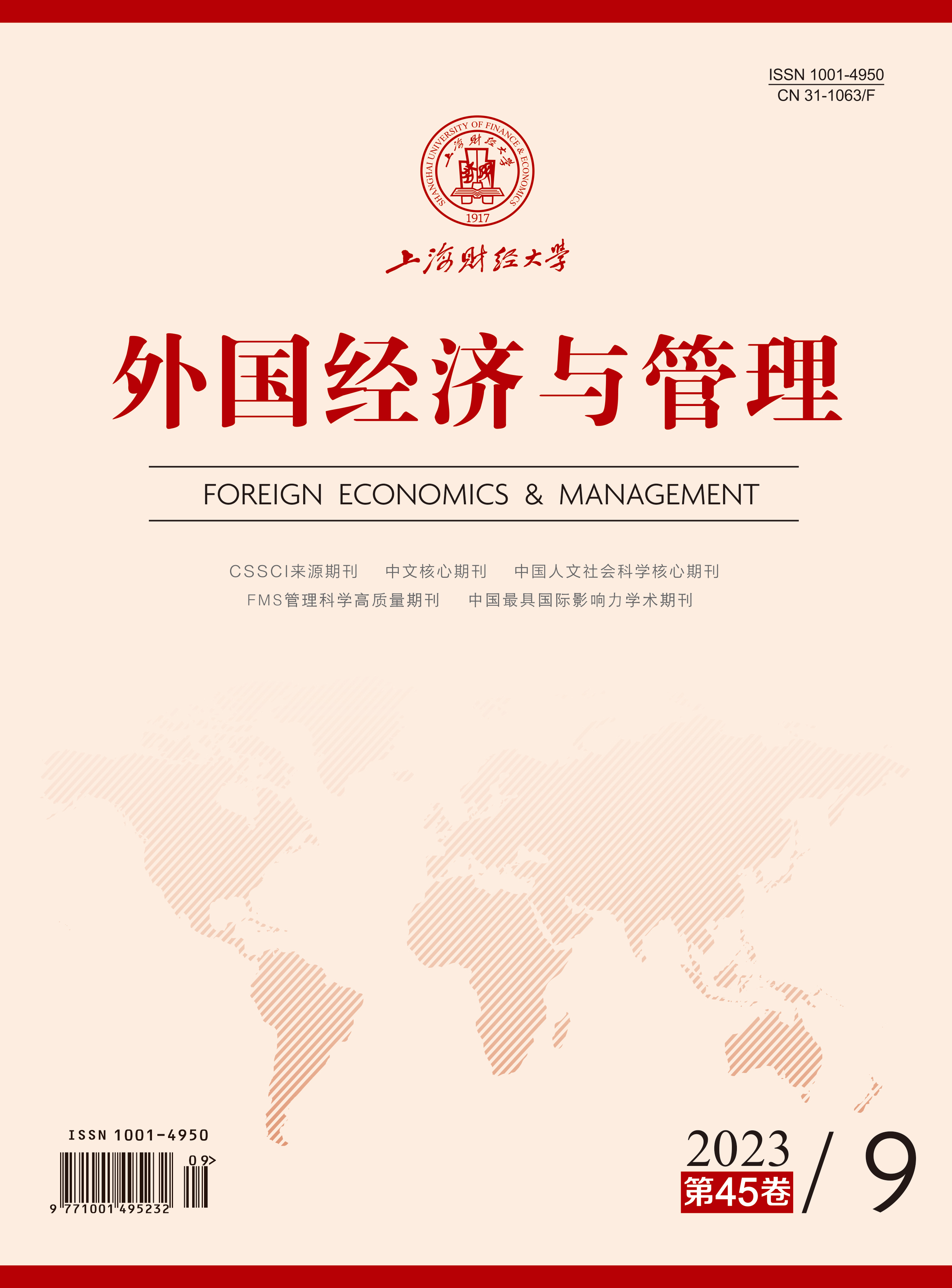促进战略协同是企业集团总部的重要职责。现有文献对战略协同的实现路径没有清晰一致的认识,在加强管控还是充分授权上各执一词。本文基于可供性—实现视角,通过与工具理性等相关概念的对比,提出了“管控效力”概念。然后,以104家大型国有企业集团为样本,采用定性比较分析(QCA)方法,考察了特定管控方式与管控效力各维度和集团组建方式、文化整合度等情境变量的组合如何影响大型国有企业集团内部的战略协同。研究结果显示,大型国有企业集团内部的战略协同有多条实现路径,包括:以实施全面管控为核心条件,以强运营管控匹配非先子后母集团组建方式或高文化整合度,以强战略管控匹配高管控效力,以弱管控匹配高管控效力四类路径。总部对下属单位的管控越全面、越严格,实现战略协同的路径就越多。而战略协同不能实现的原因是,总部对下属单位运营的管控弱且管控效力不足。本文深化了转型经济情境下管控方式与战略协同之间关联的中层理论,也为管理者通过管控方式选择来促进集团内部战略协同提供了实践指导。
大型国有企业集团内部如何实现战略协同?——一项聚焦管控效力的定性比较分析
摘要
参考文献
2 杜运周, 贾良定. 组态视角与定性比较分析(QCA): 管理学研究的一条新道路[J]. 管理世界, 2017, (6): 155-167. DOI:10.3969/j.issn.1002-5502.2017.06.011
3 郝瑾, 王凤彬, 王璁. 海外子公司角色分类及其与管控方式的匹配效应——一项双层多案例定性比较分析[J]. 管理世界, 2017, (10): 150-171. DOI:10.3969/j.issn.1002-5502.2017.10.011
4 (美)赫伯特•A•西蒙著, 詹正茂译. 管理行为[M]. 北京: 机械工业出版社, 2004: 66-69.
5 刘祎, 王玮, 苏芳. 工业大数据背景下企业实现数字化转型的案例研究[J]. 管理学刊, 2020, 33(1): 60-69. DOI:10.3969/j.issn.1674-6511.2020.01.008
7 (德)马克斯•韦伯著, 林荣远译. 经济与社会(上卷)[M]. 北京: 商务印书馆, 1997: 56.
9 王璁, 王凤彬. 大型国有企业集团总部对成员单位控制体系的构型研究——基于102家中央企业的定性比较分析[J]. 南开管理评论, 2018, 21(6): 185-197. DOI:10.3969/j.issn.1008-3448.2018.06.017
12 (美)詹姆斯•汤普森著, 敬乂嘉译. 行动中的组织: 行政理论的社会科学基础[M]. 上海: 上海人民出版社, 2007: 18.
14 郑大庆, 王雨, 陈文波. 企业社会化网络如何影响企业价值创造?——一个研究述评[J]. 外国经济与管理, 2020, 42(7): 137-152. DOI:10.16538/j.cnki.fem.20200416.402
15 中央企业管理提升活动领导小组办公室. 企业集团管控[M]. 北京: 团结出版社, 2013: 14-15.
17 Anderson C, Robey D. Affordance potency: Explaining the actualization of technology affordances[J]. Information and Organization, 2017, 27(2): 100-115. DOI:10.1016/j.infoandorg.2017.03.002
18 Ansoff H I. Corporate strategy: An analytic approach to business policy for growth and expansion[M]. New York: McGraw-Hill, 1965.
19 Bandura A. Self-efficacy mechanism in human agency[J]. American Psychologist, 1982, 37(2): 122-147. DOI:10.1037/0003-066X.37.2.122
20 Bandura A. Self-efficacy: The exercise of control[M]. New York: W. H. Freeman, 1997.
21 Berg-Schlosser D, De Meur G. Comparative research design: Case and variable selection[A]. Rihoux B, Ragin C C. Configurational comparative methods: Qualitative Comparative Analysis (QCA) and related techniques[M]. Los Angeles: Sage, 2009: 19-32.
22 Bredmar K. Digitalisation of enterprises brings new opportunities to traditional management control[J]. Business Systems Research Journal, 2017, 8(2): 115-125. DOI:10.1515/bsrj-2017-0020
23 Chenhall R H. Management control systems design within its organizational context: Findings from contingency-based research and directions for the future[J]. Accounting, Organizations and Society, 2003, 28(2-3): 127-168. DOI:10.1016/S0361-3682(01)00027-7
24 Ciabuschi F, Martín O M, Ståhl B. Headquarters’ influence on knowledge transfer performance[J]. Management International Review, 2010, 50(4): 471-491. DOI:10.1007/s11575-010-0042-3
25 Colpan A M, Hikino T. Business groups in the west: Origins, evolution, and resilience[M]. Oxford: Oxford University Press, 2018.
26 Daft R L. Organization theory and design[M]. 7th ed. New Jersey: South-Western College, 2001.
27 Desarbo W S, Atalay A S, Blanchard S J. A three-way clusterwise multidimensional unfolding procedure for the spatial representation of context dependent preferences[J]. Computational Statistics & Data Analysis, 2009, 53(8): 3217-3230.
28 Egelhoff W G. How the parent headquarters adds value to an MNC[J]. Management International Review, 2010, 50(4): 413-431. DOI:10.1007/s11575-010-0043-2
29 Fiss P C. Building better causal theories: A fuzzy set approach to typologies in organization research[J]. Academy of Management Journal, 2011, 54(2): 393-420. DOI:10.5465/amj.2011.60263120
30 Flamholtz E. Effective organizational control: A framework, applications, and implications[J]. European Management Journal, 1996, 14(6): 596-611. DOI:10.1016/S0263-2373(96)00056-4
31 Furnari S, Crilly D, Misangyi V F, et al. Capturing causal complexity: Heuristics for configurational theorizing[J]. Academy of Management Review, 2021, 46(4): 778-799. DOI:10.5465/amr.2019.0298
32 Goold M, Campbell A. Strategies and styles: The role of the centre in managing diversified corporations[M]. Oxford: Basil Blackwell, 1987.
33 Goold M, Campbell A. Parenting in complex structures[J]. Long Range Planning, 2002, 35(3): 219-243. DOI:10.1016/S0024-6301(02)00052-3
34 Hutchby I. Technologies, texts and affordances[J]. Sociology, 2001, 35(2): 441-456. DOI:10.1177/S0038038501000219
35 Li D H, Yang Z N, Ma P C, et al. Cooperation and competition among subsidiaries in a business group: Their impacts on innovation[J]. Management Decision, 2022, 60(6): 1662-1682. DOI:10.1108/MD-12-2020-1692
36 Lin X H, Germain R. Organizational structure, context, customer orientation, and performance: Lessons from Chinese state-owned enterprises[J]. Strategic Management Journal, 2003, 24(11): 1131-1151. DOI:10.1002/smj.348
37 Lunnan R, Tomassen S, Andersson U, et al. Dealing with headquarters in the multinational corporation: A subsidiary perspective on organizing costs[J]. Journal of Organization Design, 2019, 8(1): 12-24. DOI:10.1186/s41469-019-0052-y
38 Majchrzak A, Markus M L, Wareham J. Designing for digital transformation: Lessons for information systems research from the study of ICT and societal challenges[J]. MIS Quarterly, 2016, 40(2): 267-277. DOI:10.25300/MISQ/2016/40:2.03
39 Martin J A, Eisenhardt K M. Rewiring: Cross-business-unit collaborations in multibusiness organizations[J]. Academy of Management Journal, 2010, 53(2): 265-301. DOI:10.5465/amj.2010.49388795
40 Mcdonald F, Warhurst S, Allen M. Autonomy, embeddedness, and the performance of foreign owned subsidiaries[J]. Multinational Business Review, 2008, 16(3): 73-92. DOI:10.1108/1525383X200800014
41 Mintzberg H. The structuring of organizations[M]. Englewood Cliffs, NJ: Prentice-Hall, 1979: 88-91.
42 Misangyi V F, Greckhamer T, Furnari S, et al. Embracing causal complexity: The emergence of a neo-configurational perspectiv[J]. Journal of Management, 2017, 43(1): 255-282. DOI:10.1177/0149206316679252
43 O’Donnell S W. Managing foreign subsidiaries: Agents of headquarters, or an interdependent network?[J]. Strategic Management Journal, 2000, 21(5): 525-548. DOI:10.1002/(SICI)1097-0266(200005)21:5<525::AID-SMJ104>3.0.CO;2-Q
44 Ragin C C. Redesigning social inquiry: Fuzzy sets and beyond[M]. Chicago: University of Chicago Press, 2008: 85-105, 136.
45 Rodriguez C, Torres J. Central coordination and profitability in large Latin American business groups[J]. Journal of Business Research, 2020, 119: 599-609. DOI:10.1016/j.jbusres.2020.07.007
46 Segars A H, Grover V, Teng J T C. Strategic information systems planning: Planning system dimensions, internal coalignment, and implications for planning effectiveness[J]. Decision Sciences, 1998, 29(2): 303-341. DOI:10.1111/j.1540-5915.1998.tb01579.x
47 Sharapov D, Kattuman P, Rodriguez D, et al. Using the SHAPLEY value approach to variance decomposition in strategy research: Diversification, internationalization, and corporate group effects on affiliate profitability[J]. Strategic Management Journal, 2021, 42(3): 608-623. DOI:10.1002/smj.3236
48 Skaaning S E. Assessing the robustness of crisp-set and fuzzy-set QCA results[J]. Sociological Methods & Research, 2011, 40(2): 391-408.
49 Strong D M, Volkoff O, Johnson S A, et al. A theory of organization-EHR affordance actualization[J]. Journal of the Association for Information Systems, 2014, 15(2): 53-85. DOI:10.17705/1jais.00353
50 Tsai W. Social capital, strategic relatedness and the formation of intraorganizational linkages[J]. Strategic Management Journal, 2000, 21(9): 925-939. DOI:10.1002/1097-0266(200009)21:9<925::AID-SMJ129>3.0.CO;2-I
51 Tim Y, Hallikainen P, Pan S L, et al. Actualizing business analytics for organizational transformation: A case study of Rovio Entertainment[J]. European Journal of Operational Research, 2020, 281(3): 642-655. DOI:10.1016/j.ejor.2018.11.074
52 Yu T Y, Wu N Q. Bureaucratic hierarchy vs. feudal hierarchy: A study on the organizational culture of China’s SOEs[J]. International Journal of Business and Management, 2011, 6(2): 139-146.
53 Zammuto R F, Griffith T L, Majchrzak A, et al. Information technology and the changing fabric of organization[J]. Organization Science, 2007, 18(5): 749-762. DOI:10.1287/orsc.1070.0307
引用本文
孙春艳, 王凤彬. 大型国有企业集团内部如何实现战略协同?——一项聚焦管控效力的定性比较分析[J]. 外国经济与管理, 2023, 45(9): 135-152.
导出参考文献,格式为:





 5281
5281  4374
4374

